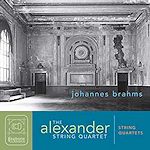
Ron Goodwin (1925-2003)
British Light Music Volume 11
New Zealand Symphony Orchestra/Ron Goodwin
rec. 1993, Symphony House, Wellington, New Zealand
Previously released as Marco Polo 8.223518
NAXOS 8.555193 [70]
In the 1990s, the Marco Polo label released a significant number of recordings of British Light Music. In this, it wasn’t alone, as Dutton, Hyperion and ASV did likewise. What made the Marco Polo series distinctive is that it was composer-focussed, whereas the others were collections featuring different composers. Naxos is now re-issuing the recordings, and there have been a number of reviews in the last year on our site. This is the first I’ve heard (in either guise), and I chose it because of the New Zealand connections: the orchestra, one of the works, and personally, as it is my adopted country.
Ron Goodwin is best known for his film scores, and there is a volume of his music in the Chandos Film Music series Chandos (CHAN10262 – review). There are three works on this Naxos recording from movies, the best known being from the 1963 film, 633 Squadron. I was quite disappointed that music from the film I knew Goodwin for – Those Magnificent Men in Their Flying Machines – was not included here (it is on the Chandos recording). Despite that absence, what is included here is very enjoyable.
The influence of the Golden-era Hollywood composers such as Korngold and Newman is very evident. There are plenty of moments when the music could have been written by John Williams (born seven years after Goodwin), but doesn’t quite go on to that level of inspiration. The stirring theme from 633 Squadron is a good example of this – the Raiders March from Raiders of the Lost Ark comes to mind; bear in mind that it was written when John Williams hadn’t even composed the theme for the TV series Lost in Space.
The two major works presented here, neither film-related, are the Drake 400 Suite and New Zealand Suite, fifteen and nineteen minutes respectively. The former was commissioned by Plymouth Council in 1979 to be part of the celebrations of the 400th anniversary of Sir Francis Drake’s return to the city after his round-the-world voyage. It demonstrates the composer’s ability to paint pictures with music, a skill which would serve him well in his film score career.
The New Zealand Suite was commissioned in 1983 by the New Zealand Symphony Orchestra, Goodwin having been a regular visiting conductor to the country for a decade. It is interesting to reflect on the changing times: NZSO commissions now are exclusively given to local composers. It is a romantic work, portraying the country’s stunning scenery and local traditions in a way that more evokes an Edwardian view of the country. Having just read a book describing Thomas Cook-organised tours of the country in the early 1900s, I felt Goodwin’s music could have served as background music. His idyllic depiction of the glorious fjord Milford Sound clearly shows it in its postcard beauty. When I was there, thirty inches of rain had fallen in two days, and visibility was a few hundred yards. Similarly, Picnic at Rotorua harks back to a more innocent time, one where there isn’t a volcanic eruption, as occurred in the area in 1886. While Goodwin may have seen the country through rose-tinted glasses, it doesn’t detract from the quality of the music. The other non-film works are colourful miniatures, though less memorable.
The orchestra plays very well for the composer, and the sound quality is good, especially considering the sound of some of the Marco Polo recordings of that era.
The term “Light Music” sometimes is given a negative connotation as if it is not worthy of serious consideration, or has any lasting value. With any genre of music, quality is immediately recognisable and will stand the test of time. Ron Goodwin’s music certainly is that.
David Barker
Contents
633 Squadron – Main Title Theme
Drake 400 Suite
Puppet Serenade
New Zealand Suite
Arabian Celebration
Venus Waltz
Prisoners of War March
Minuet in Blue
The Trap – Main Theme
Girl with a Dream
Help us financially by purchasing through





















